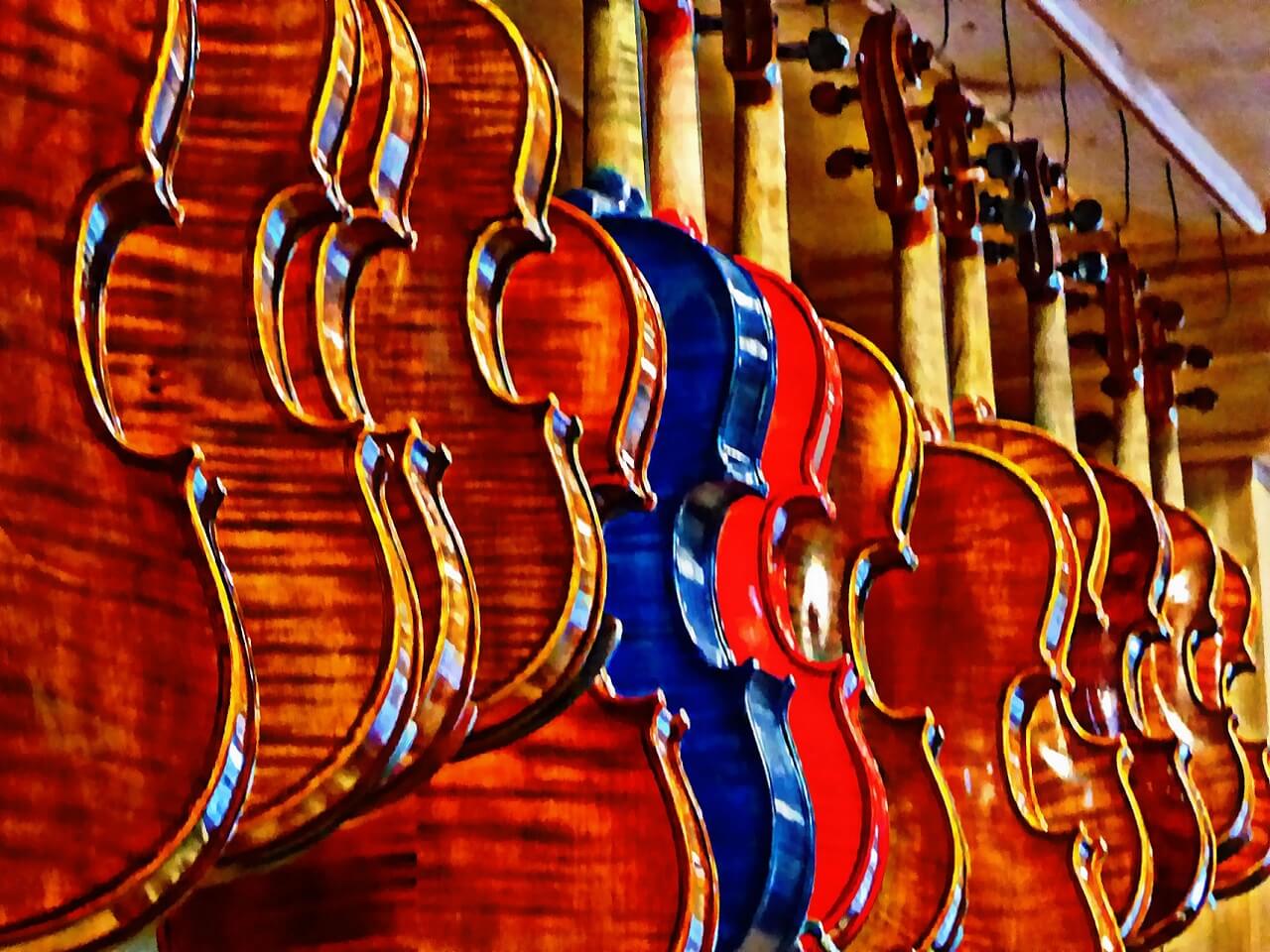“Vivaldi’s violins” — 12 of them, together with one viola, two cellos, and two double basses — left Venice for Cremona, to be studied, preserved, restored, and enhanced. The rare and precious collection is located in Venice’s ancient Ospedale della Pietà (today the Children’s Provincial Institute “Santa Maria della Pietà”), which has been the fulcrum of all the musical activity of the one to whom the music of the Italian 18th century owes inspiration and instrumental invention: Antonio Vivaldi (1678–1741).
Founded in 1346 — as tradition says, but actually even earlier — by the Franciscan friar Pietruccio di Assisi, the orphanage of Santa Maria della Pietà in Riva degli Schiavoni was one of the four Venetian conservatories for girls. A thriving institute under the Most Serene Republic, it was supported by public administrators and private benefactors; the doge visited it every year on Palm Sunday, and popes like Clement VI (around 1350) and Paul III (1548) took an interest in it, as evidenced by two city memorial stones.
The “foundlings” of the Pietà were divided in two categories: the figlie de comun (common girls), who learned sewing and embroidery, and the figlie di coro (girls of the chorus), musically more gifted, who learned singing, polyphony, and an instrument, as well as elements of composition and music direction. The latter received a dowry that was to last for sixteen months after the wedding, and the future musicians played for the nobles during parties and gave private lessons costing two to three ducats each.
The Pietà entrusted young Vivaldi from 1703 onward with various tasks: maestro di violino (violin teacher); teacher of the viola all’inglese; and, finally, maestro de’ concerti (conducting and composing instrumental works), a qualification with which the Venetian composer would remain tied up for life, despite some breaks in relationship and periods of absence. Most of his concertos and his sacred music are destined for the putte dell’Ospedale della Pietà (the girls of the Hospital of Mercy).
To this musical genius, best known for Le quattro stagioni (The Four Seasons), five months before the Pietà’s appointment, they had already given the nickname prete rosso (the red-headed priest) for his copper-colored hair, similar to that of his father. In fact, the Reverend Don Antonio Lucio was ordained in the priesthood on March 13, 1703, through the normal discipline in the Latin Church until 1973. He received first tonsure and became porter in 1693, reader in 1694, exorcist in 1695, acolyte in 1696, subdeacon in 1699, deacon in 1700, and priest in 1703.
All this had to be known to Pope Benedict XVI, who, in his address at the end of a concert in Vivaldi’s honor on August 9, 2011, said the following about “the great Italian”:
The two works by Vivaldi that have resounded this evening are part of the so-called “full orchestra” pieces, composed for an orchestra of strings and basso continuo, many of which had a didactic aim, especially when Vivaldi taught at the “Pietà” [Ospedale della Pietà], one of the four orphanages-conservatories for girls in Venice. The structure of the three movements with a brief central adagio is typical of the great Italian composer. However, this architectural uniformity is never monotonous because — as we have heard, the tone treatment, the orchestral color, the dynamic of the musical subject, the blend of harmonies, the art of counterpoint and echoing, make Vivaldi concertos an example of luminosity and beauty that conveys serenity and joy. And I think that this stemmed from his faith. Vivaldi was a Catholic priest, faithful to his Breviary and to his devotional practices. In listening to his opus of sacred music his profoundly religious heart is revealed.
While a congenital “strettezza di petto” (tightness of the chest), a severe form of asthma that often compelled him to leave the altar before completing the liturgy, in 1706 forced him to abandon the sacred ministry and allowed him to devote himself entirely to music, Reverend Don Antonio Vivaldi remained “faithful to his Breviary and to his devotional practices.”
Carlo Goldoni (1707–1793), a great exponent of the Venetian theater, who debuted as a librettist in 1735, thus tells us (Memoirs of Carlo Goldoni, Osgood, Boston, 1877, pp. 188–190) about his first meeting with “this ecclesiastic, who was an excellent performer on the violin and an indifferent composer”:
I found him surrounded with music and with the breviary in his hand. He rose, and made the sign of the cross, put his breviary aside, and then, after the usual compliments: “What motive, sir,” said he, “procures me the pleasure of seeing you?”
Goldoni explains that he was sent to adapt the libretto by Apostolo Zeno for Griselda, “the opera of next fair.” And, feeling welcomed like a novice, he continues:
“I shall have the honor of commencing under the orders of Mr. Vivaldi.” The abbé resumed his breviary, made a second sign of the cross, and returned no answer. “Sir,” said I, “I should be sorry to withdraw you from your religious occupation; I will wait upon you in another time. … Be so good as allow me to look at your drama.” “Yes, with all my heart … where is Griselda gone to? It was here … Deus in adiutorium meum intende. Domine…Domine…Domine… [I]t was here this very instant. Domine ad adiuvandum… Ah! Here it is. … The abbé laughed at my attempt, and gave me the drama, and paper and ink, resumed his breviary, and walked about, reciting his hymns and his psalms. … In less than a quarter of an hour I wrote down an air of eight verses, divided into two parts. I then called my ecclesiastic, and showed him my work. Vivaldi read it, his countenance brightened up, he read it again, threw down his prayer-book[.] … “I beg your pardon, sir”; and he embraced me, and protested he would never have any other poet than myself.


